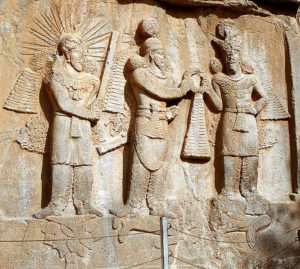 The Biblical city of Rome has announced that it plans to soon allow the public to tour ancient tunnels for the pagan god Mithra, which it has been restoring for some time.
The Biblical city of Rome has announced that it plans to soon allow the public to tour ancient tunnels for the pagan god Mithra, which it has been restoring for some time.
The tunnels are said to be located under the Baths of Caracalla, and are separate from the Mithraeum, which was discovered last year. The Mithraeum was reportedly found with a fresco of the pagan god on the wall, and also a space for what is believed to be an area for animal sacrifices.
As the largest Mithra temple in the Roman empire, the discovery confirms what was thought to be true about the area: that following the death and resurrection of Christ, Romans were involved for centuries in Mithra worship.
Mithra, originally the god of the Persians, became popular in Rome beginning between 80 and 120 AD. According to scholars and experts on the matter, Sunday was marked as the day set aside for Mithra, being known as “the sun god.” Celebrations also took place in mid-December for Mithra during the Winter Solstice, who was stated to have been born according to pagan legend at that time of year.
“Christians chose to celebrate Christmas on [December 25th] as part of a broader attempt to supplant pagan festivals with Christian holidays,” outlines Mesa Biblical Church in Camarillo, California on their website Truth According to Scripture. “The story of Mithras falls into the category of a creation myth, whereas the Gospels most closely resemble the ancient literary genre of historical biography. Mithras never existed as a historical person, whereas Jesus had many followers who later served as eyewitnesses. Mithras saved the world by slaying a bull, while Jesus atoned for the sins of the world by offering himself as a sacrifice.”
The church states that the cult of Mithraism was generally followed by the Roman military.
“The worship of Mithra gradually moved westward from Persia after the conquests of Alexander the Great, adopting several features from local traditions along the way,” it continues. “Mithraism borrowed ideas and practices from the Phrygian cult of Attis and Cybele in Asia Minor, as well as astrological symbolism from the Greek Hipparchus.”
The tunnels are slated to open for public viewing in December following much restoration, cleaning and the placement of artificial lighting into the dark caverns.
Photo: Phillipe Cavin
Become a Christian News Network Supporter...


